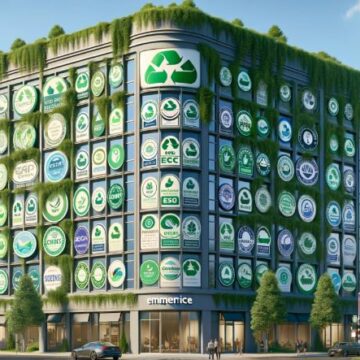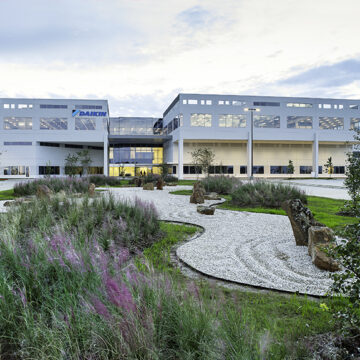Don’t Overlook WELL for Your Existing Projects
- Perspectives
People are excited about WELL, and using it to validate that their project is designed and built with occupant health and well-being at the forefront.
In less than three years’ time, the WELL Building Standard has gone from initial launch to having over 100 million square feet of projects registered and pursuing certification. We’re seeing the adoption of the standard across almost every sector, ranging from individual office fit-outs, all the way up to large scale community developments.
It also makes business sense, as savvy organizations are using it to increase tenant interest in their property, as a recruiting tool for prospective employees, and to retain current employees by demonstrating their organizational commitment to providing healthy spaces for their teams.
But what about all of those projects that were built prior to the launch of WELL in October 2014, or projects that were built even more recently but didn’t choose to purse WELL at that time? Are they left behind?
Not only is the answer a resounding “no,” but some of these projects may actually be more aligned with the WELL Building Standard than you might think.
Two certification frameworks, called typologies in WELL, were developed to address the existing building sector. Both the New and Existing Buildings and New and Existing Interiors typologies contain specific guidance for existing buildings.
This may seem counter-intuitive to what you’ve come to know through past experience working with other rating systems, such as LEED.
What makes WELL different is that it’s a performance-based standard. In other words, achieving WELL certification requires that a building actually performs as required by the standard, and that it be tested by an independent WELL Assessor.
From that standpoint, existing buildings have a head start on new buildings. They are already built, operating, and performing to some level.
The question then becomes, how are they performing?
Whereas new buildings can require extensive modeling and simulation to predict performance, we can take a different approach with existing buildings. Through a combination of existing design document assessments, policy surveys, and field measurements, we are able to paint a clear picture of the effort involved in achieving WELL certification.
So, how does your existing building align with WELL?
Having conducted a number of these existing building WELL evaluations, we have found that if you designed and built your project with the health and well-being of the occupant in mind, or achieved LEED certification already, your project may be “WELL-aligned” and could be a great candidate for WELL certification.
Similarly, we have also found that Core & Shell developments that have focused on providing health-focused amenities like daylighting, indoor-outdoor connectivity, active stairs, and fitness centers are also in a good place to make achieving certification feasible.
Having developed, tested, and modified our approach to WELL for Existing Buildings over the last two years, we have implemented a customer-centric approach that maximizes client confidence and decreases risks. This approach is summarized in a simple graphic:

1. Analyze
Before diving in and fully committing to pursuing WELL, clients want to understand the significance of the process. Assessing the existing project documentation and company policies can help identify any significant issues early. Nobody wants to spend a lot of time and effort only to find out weeks later that there’s a major obstacle to achieving certification. An early analysis identifies the most common and significant issues to achieving WELL certification, and helps clients make informed go/no-go decisions.
2. Measure
If the assessment phase identifies that the project is a candidate to achieve WELL certification, field measurements and observations at the project site will determine the actual performance of the space. This process replicates the work done by a WELL Assessor and identifies any performance issues that need to be remedied to achieve certification.
3. Remedy
If field measurements and observations reveal deficiencies or issues, these are highlighted and modifications to the space, operations, or policies are implemented to re-align the project with the Standard.
4. Pre-Test
Nobody likes surprises, so pre-testing ensures that the space will test out favorably when it’s time for the WELL Assessor to be on-site. Pre-testing is essentially a quality assurance process implemented after remediation work is complete. It’s similar to commissioning, but with a focus on criteria found in WELL.
5. Verification
When the project is ready, it’s time to bring in the WELL Assessor. Because the project has been set up to succeed, performance verification by the WELL Assessor should go smoothly.
6. WELL Certified
Time to celebrate and share your story with your team, future tenants, or prospective employees!
Conclusion
Of course, we still advocate that projects that are interested in WELL incorporate a plan from the start. But if your project is underway, or already built, it’s not too late to become a part of the rapidly growing WELL Building movement. Conducting a WELL evaluation on your existing project is a great way to either validate that your project performs with health and well-being in mind, or it can identify areas for improvement.




